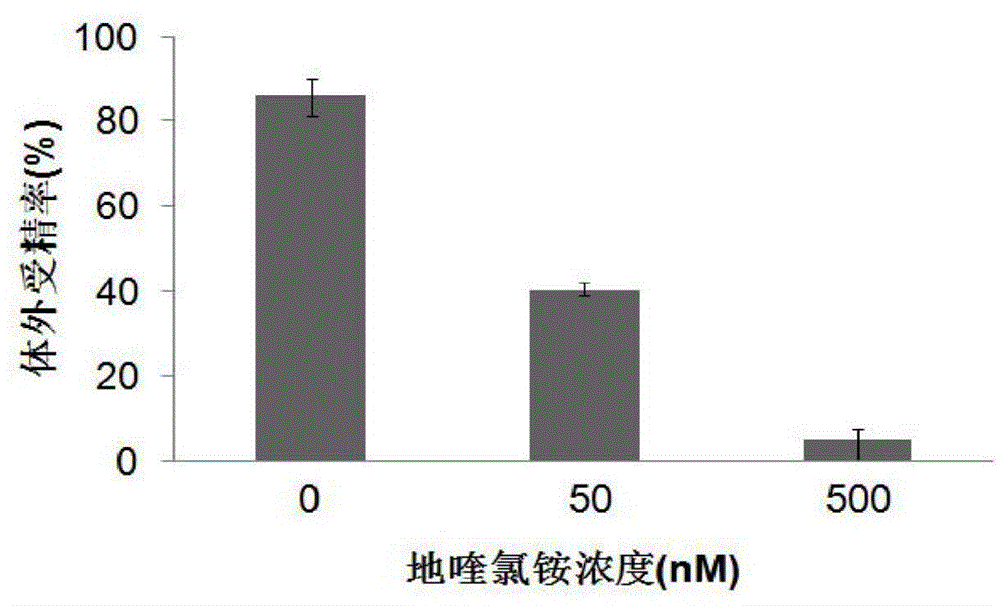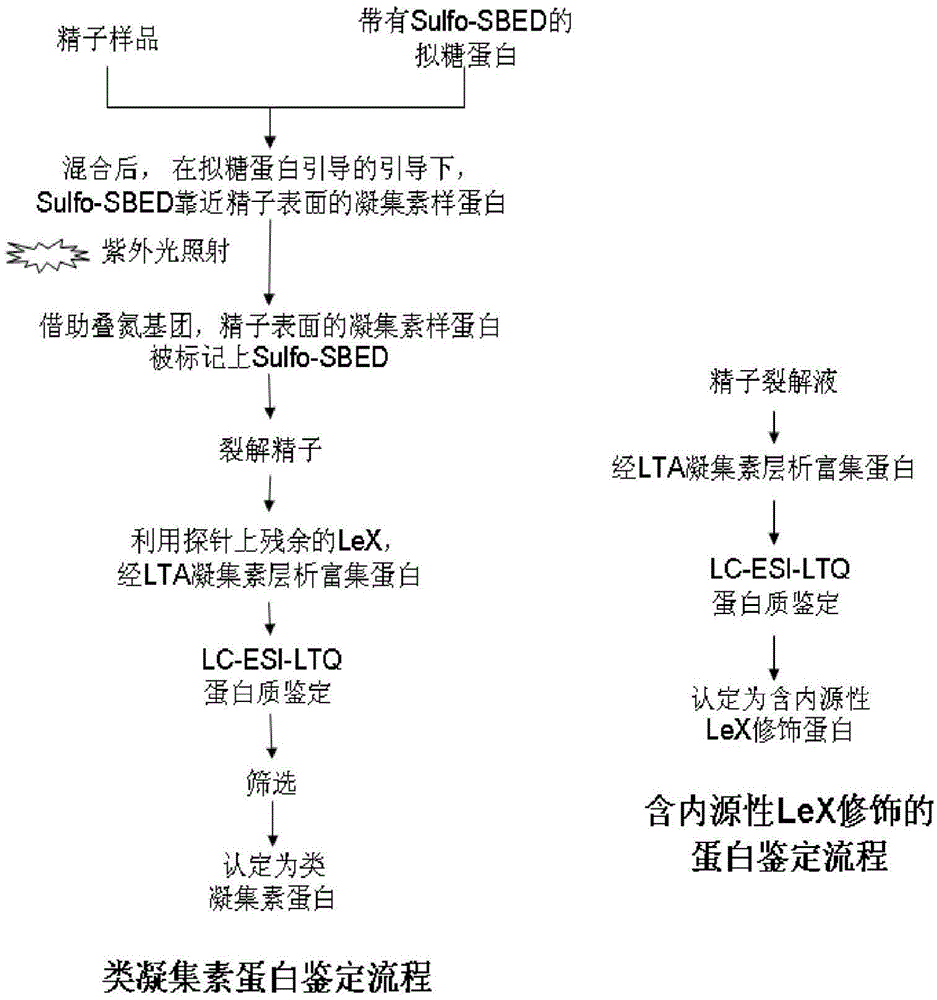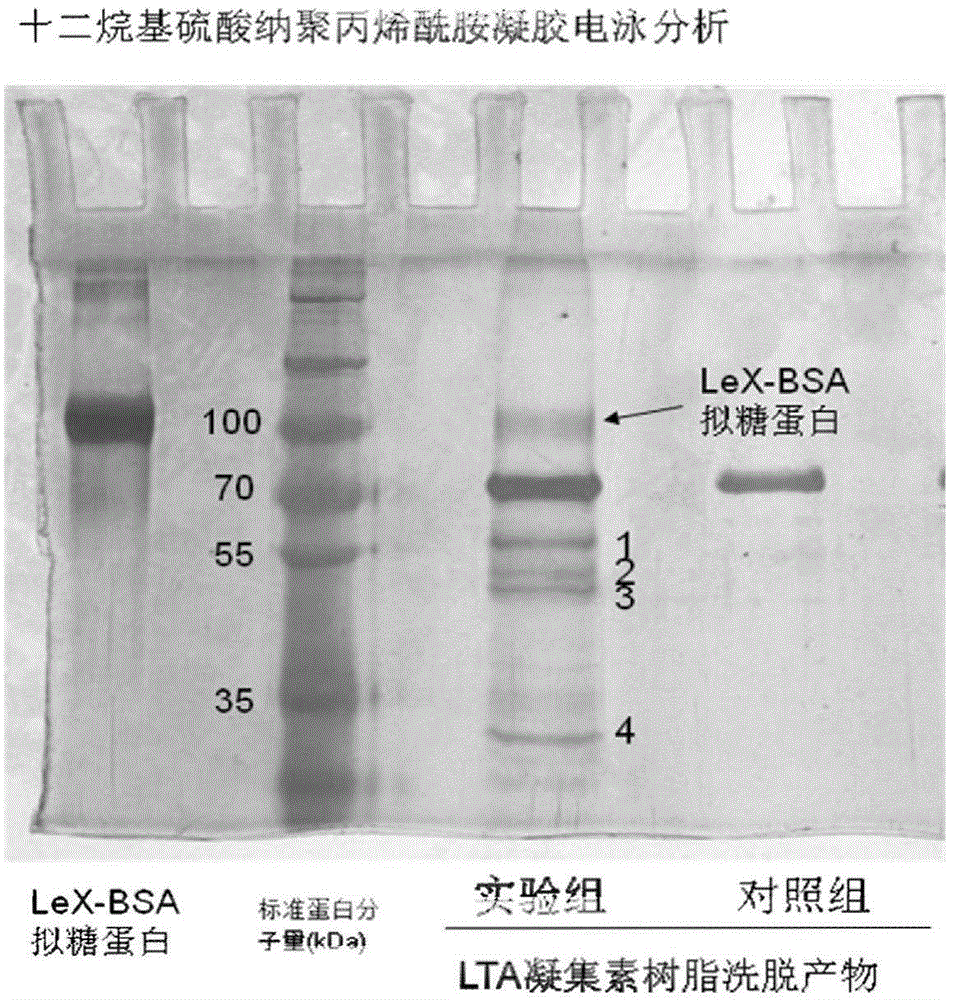Application of dequalinium chloride as mouse birth control medicine
A dequinium chloride and rodent technology is applied in the field of rodent birth control drugs to achieve the effects of population control, strong affinity and high activity
- Summary
- Abstract
- Description
- Claims
- Application Information
AI Technical Summary
Problems solved by technology
Method used
Image
Examples
Embodiment 1
[0041] Embodiment 1: the application of dequalinium chloride as the birth control drug of mice
[0042] Experiments with different concentrations of CTBS used >50 mouse eggs for each dose, repeated 3 times, and each dose used a total of >150 eggs. The experimental results are as follows: figure 1 As shown, its half-inhibition constant is at 50nM, indicating that dequalinium chloride can well inhibit the in vitro fertilization of mice.
Embodiment 2
[0044] We found that CTBS is expressed in rodent sperm, and CTBS antibody can inhibit in vitro fertilization in mice, but this protein is not expressed in human sperm. Its experimental method is as follows:
[0045] (1) Discovery of CTBS on mouse spermatozoa:
[0046] CTBS on mouse sperm was identified by using Lewis oligosaccharide X (Lewis X, abbreviated as LeX) probe, and it was proved that CTBS can bind to mouse egg zona pellucida.
[0047] (1) First identify the Lewis X receptor, the identification process is as follows Figure 2AAs shown, it includes the identification process of lectin-like proteins that can recognize Lewis X and the identification process of endogenous proteins containing Lewis X modifications. The principle is to modify the surface of bovine serum albumin (BSA) with Lewis X to make the pseudoglycoprotein LeX-BSA, and further modify the pseudoglycoprotein with ultraviolet crosslinking reagent [6-(biotinamido)-2-( p-Azidobenzamido)caproylamino]ethyl-...
PUM
 Login to View More
Login to View More Abstract
Description
Claims
Application Information
 Login to View More
Login to View More - R&D
- Intellectual Property
- Life Sciences
- Materials
- Tech Scout
- Unparalleled Data Quality
- Higher Quality Content
- 60% Fewer Hallucinations
Browse by: Latest US Patents, China's latest patents, Technical Efficacy Thesaurus, Application Domain, Technology Topic, Popular Technical Reports.
© 2025 PatSnap. All rights reserved.Legal|Privacy policy|Modern Slavery Act Transparency Statement|Sitemap|About US| Contact US: help@patsnap.com



